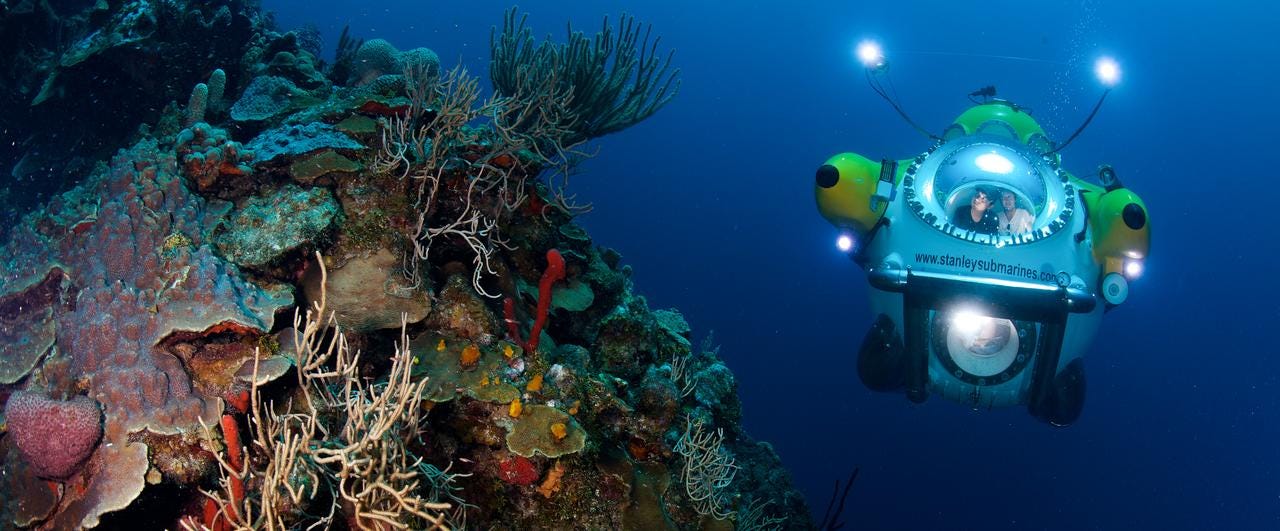Off the Deep End in Captain Karl’s Homemade Yellow Submarine
An American expatriate living off the coast of Honduras pilots his experimental vehicle 2,000 feet down. I joined him for an unforgettable encounter with the mysteries of the deep.

Photos by Lia Barrett
Our first meeting began with an unexpected question: “Do you have socks?”
Tattooed and dressed in cargo shorts, Captain Karl Stanley stood before me in the sluggish morning heat of Roatan Island. He would be taking me to a depth of 2,000 feet underwater in his experimental vehicle, and the first question he asked me was if I had socks.
Thus began my earliest face-to-face conversation with the deep-sea submarine designer and captain. His inquiry added to a curious persona cultivated by several bar patrons I had met the night before on the island, Honduras’ largest in the Caribbean, when I had mentioned that I was looking for him.
“His IQ is off the charts.”
“To some, he may come off as aloof, but in reality he’s just not that chatty.”
“Karl’s a little crazy, but in a good way. He just had a drink here. You just missed him.”
The responses bloomed from behind bottles of Salva Vida beer as breezes from the Caribbean refreshed our brows. I worked my way down Karl’s known hau…
Keep reading with a 7-day free trial
Subscribe to Narratively to keep reading this post and get 7 days of free access to the full post archives.



